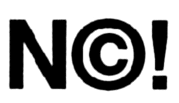- 2 Live Crew releases a parody of Roy Orbison's "Oh, Pretty
Woman," substituting the lyrics with "shocking ones". Their manager
asks for permission to release the song, but the song's publisher
refuses permission. 2 Live Crew releases the song anyway, giving
credit to copyright holders.
The Supreme Court ruled that this was fair use, since it was a valid
parody of the original song. (Campbell vs. Acuff-Rose Music, 1994)
- The Nation excerpts some short passages from President Ford's
memoirs in discussing the Nixon pardon, before the book is released.
Harper & Row, the publishers of the book, sue the Nation.
The Supreme Court ruled this illegal, because Ford's memoirs were
considered an "expression" of the facts in an unpublished work. The
Nation may have been able to use purely factual elements from the
book.
- Samsung runs an ad starring a robot in a wig, gown and jewelry
(reminiscent of Vanna White) standing next to a Wheel-of-Fortune-
like game board. White sues under a California law which gives her
the exclusive right to her name, likeness, signature and voice for
commercial purposes.
The Ninth Circuit Court of Appeals refused to review this case,
upholding a lower court's ruling against Samsung.
- Triangle Publications, Inc., a publisher of a TV Guide competitor,
uses the image of the TV Guide magazine cover in one of their ads.
Knight-Ridder, owners of TV Guide, sues.
This was ruled fair use, since the use of the TV Guide cover did not
reproduce the "essence" of TV Guide (the schedules and articles), and
thus did not substantially reduce the market for TV Guide.
